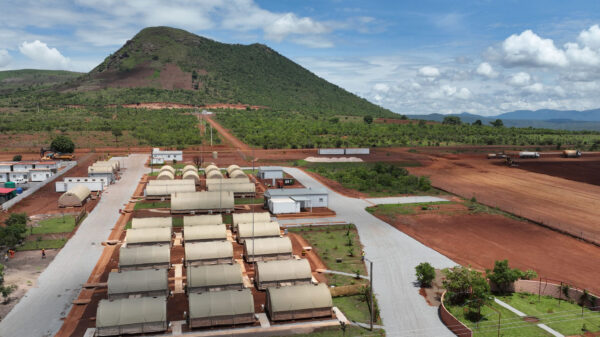Idaho Strategic Resources, Inc. (NYSE: IDR) discovered 23.5 per cent total rare earth elements (TREE) from a sample taken from its Mineral Hill Project in Lemhi County, Idaho.
The company said on Thursday that its latest exploration program at Mineral Hill aimed to find and collect a rare earth elements sample. The previous sample was reported back in 1954 and the report from it mentioned that the sample had 21.5 per cent total rare earth elements.
The Mineral Hill rare earth elements project covers about 2,000 acres in the northern part of the Idaho REE-Th Belt. It has four different areas where rare earth elements can be found: Lower Roberts, Upper Roberts, Lower Lee Buck and the recently added Phyllis Gross claim group.
The sample was first mentioned in a thesis by Fred Sturm from the University of Idaho and later in a report by Agatin Abbott from the Idaho Bureau of Mines and Geology. Sturm’s report described the discovery as a large mass of monazite, which was the biggest one found in the region at the time.
After studying both historical reports, the geologists from Idaho Strategic Resources found and collected a sample from the same monazite occurrence mentioned by Sturm and Abbott. The assay results for sample 98241 showed that it contained 23.5 per cent TREEs. This confirms the accuracy of the previous work and provides strong evidence to support the company’s decision to focus on this area.
According to IDR geologists, the monazite mass is a layer of sand that is 10 centimeters thick. It has a pale-yellow colour and is surrounded by two different types of rock called carbonatites. The total width of the carbonatites and the sand layer is 0.85 meters.

Map of rare earth in Idaho. Image via Idaho Strategic Resources.
Read more: NevGold discovers new untested areas at Limousine Butte
Read more: NevGold forms B.C. subsidiary to focus on Ptarmigan
Rare earth elements used in magnets include neodymium
The carbonatite on the upper side, called the hanging wall, is greenish in colour and contains large crystals of ilmenite. On the lower side, known as the footwall, the monazite layer is surrounded by brightly colored, red-brown to orange-brown, crystalline carbonatite. When analyzed, this carbonatite was found to contain 7.5 per cent TREE.
“We always knew this area of Idaho contained carbonatites with exceptional REE grades. The historic information was paramount in refining our regional focus and the decision to first establish these claims back in 2019,” the company’s VP of Exploration, Rob Morgan said.
“We look at the Mineral Hill Project as being ‘centered’ on the high-grade REE mineralization of the district with Roberts, Lower Lee Buck and the Phyllis Gross occurrences defining the center of the bullseye.”
According to the table provided, the valuable REEs used in magnets like neodymium (Nd) and praseodymium (Pr) make up around 16.23 per cent of the total rare earth elements.
Because of this favorable mix of individual REEs and the impressive overall grade, IDR plans to send the sample for additional metallurgical testing. This testing will include techniques like flotation, gravity, and magnetic separation to better understand the properties of the sample. They may also explore other methods for recovering and separating the rare earth elements that are currently being studied.
Read more: Gold is still the best hedge against inflation: NevGold CEO
Read more: NevGold to hit the ground running at Limousine Butte in 2023: Caesars Report
Idaho is known as a poly-metal mining state
Idaho is known for several types of mining activities, with mining being an important industry in the state. The primary types of mining in Idaho include gold, silver, copper and lead mining.
Late last month, Perpetua Resources Corp. (TSX: PPTA) and Iron Woman Construction and Environmental Services brought their teams and equipment to the Stibnite Mining District for the next phase of voluntary cleanup and water quality improvement.
This summer, Iron Woman will assist Perpetua Resources in moving over 300,000 tons of old mine waste away from sensitive water areas to safer storage locations.
NevGold Corp. (TSXV: NAU) (OTCQX: NAUFF) also operates in Idaho, producing high-grade heap leachable gold from its property at Nutmeg Mountain. Recent drilling results indicate the potential of 0.80 g/t Au over 51.5 meters from surface (oxide), including 1.40 g/t Au over 11.3 meters from a depth of 9.8 meters (oxide) in Hole NMD0004.
.
NevGold is a sponsor of Mugglehead news coverage
.














